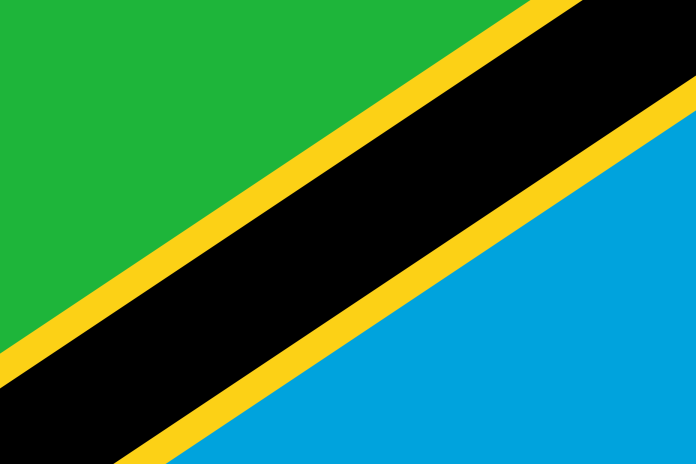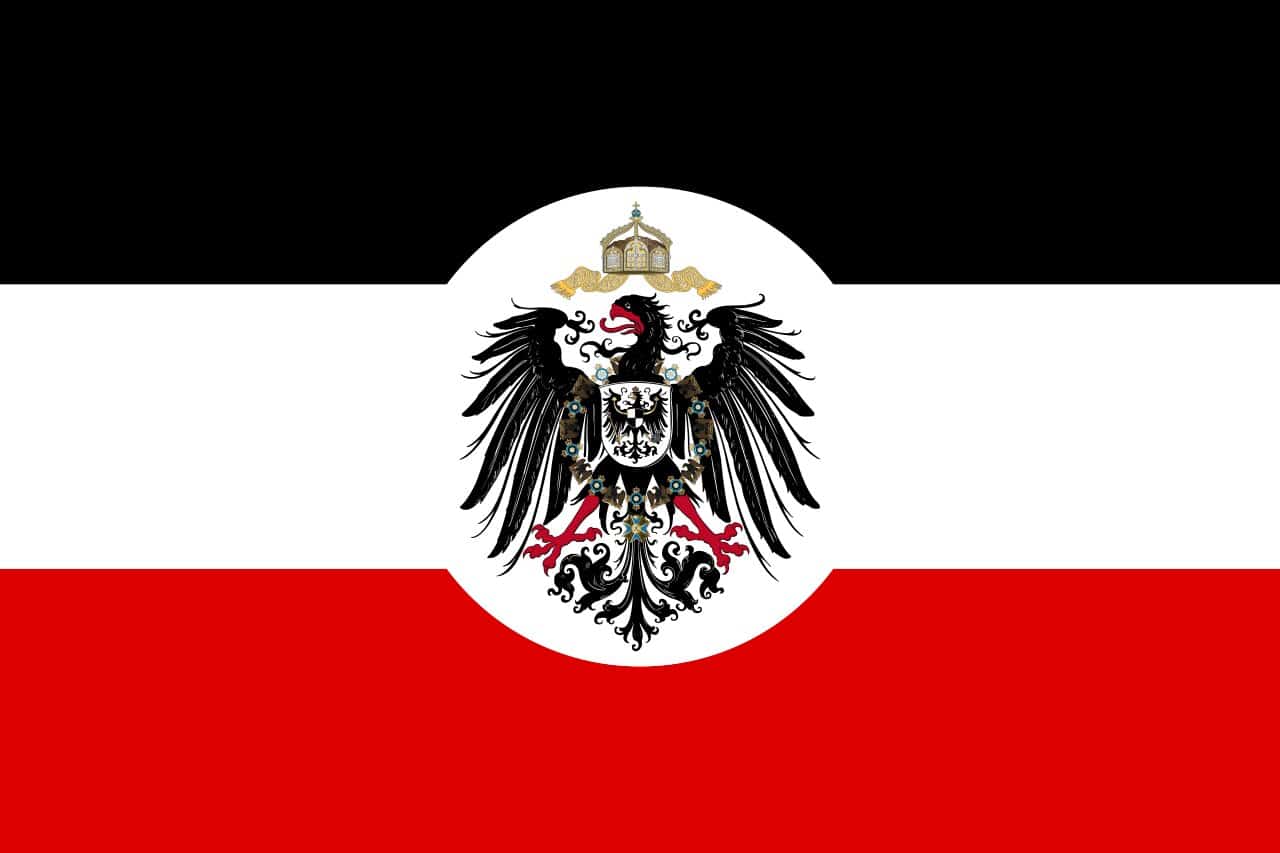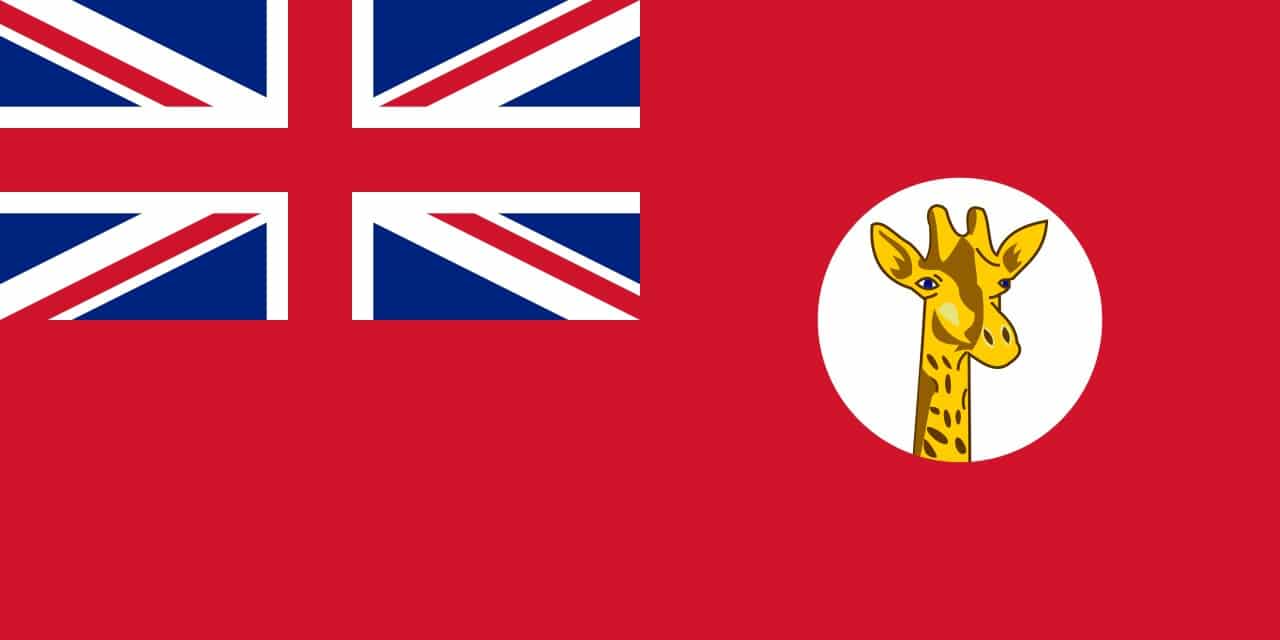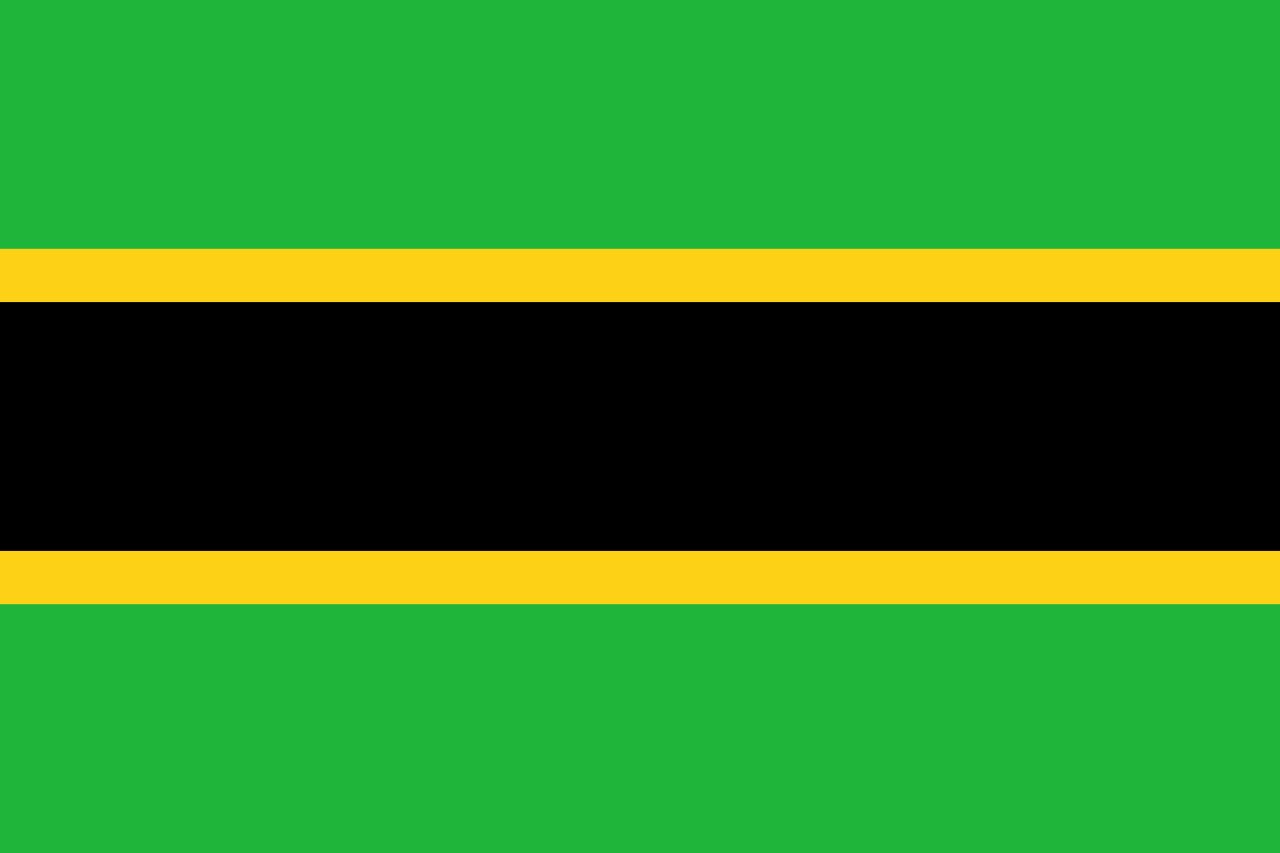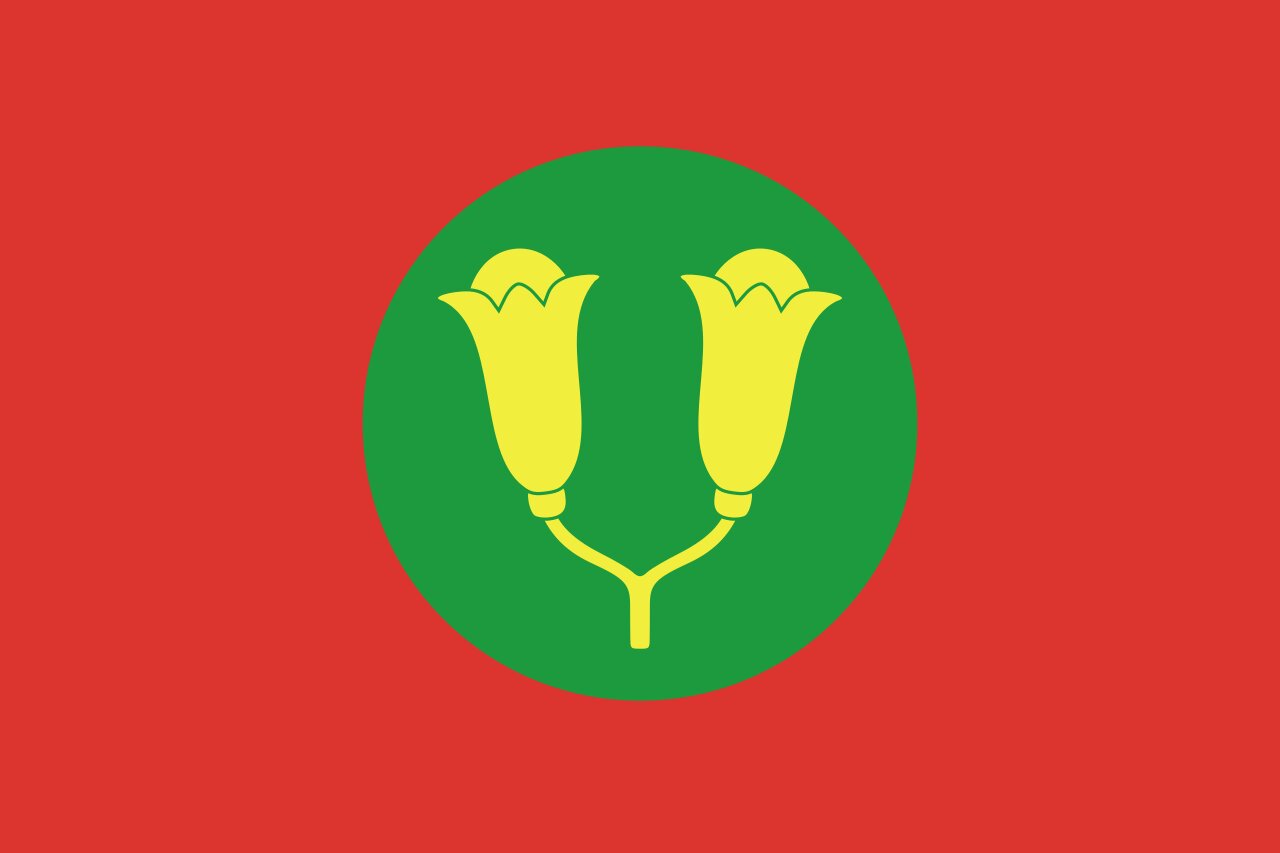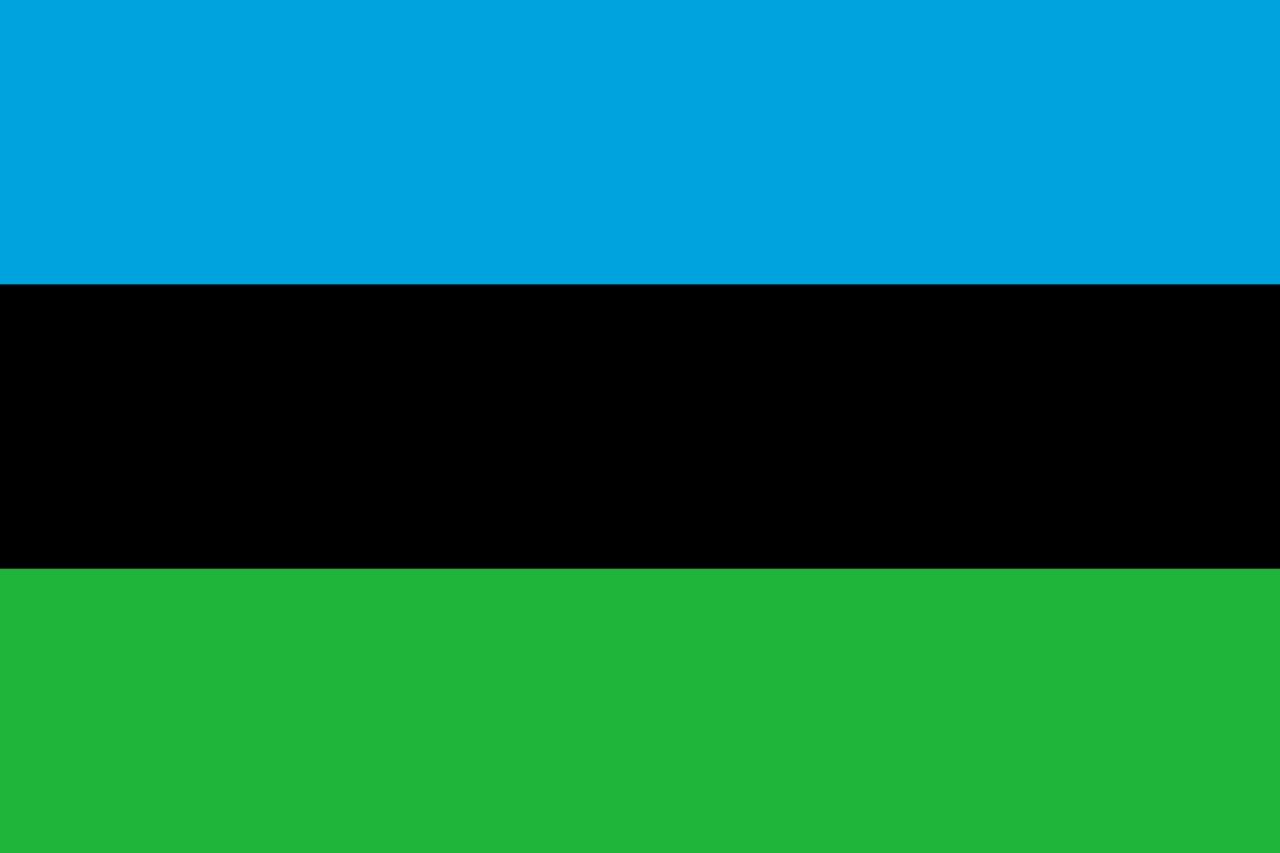Tanzania Flag – History, Design, Symbolism and More
Tanzania flag [ in Swahili: bendera ya Tanzania] is made up of a yellow-bordered black diagonal stripe with a greenish upper triangle as well as a sky blue lower triangle separated sideways from the bottom hoist-edge corner. It is the United Republic of Tanzania flag because the two republics merged in 1964 when it was adopted to replace the independent flags of Zanzibar and Tanganyika. The current Tanzania flag’s design contains features from the two previous flags. It is one of a few national flags that include a diagonal line, with the DR Congo, Trinidad & Tobago, Namibia, and Brunei being examples.
Read this article to learn all about the history of the flag for Tanzania, the design and Tanzania flag meaning!
Tanzania Flag History

During the Eastern African Campaign in 1916, the United Kingdom, along with its colony South Africa and sister Allied power Belgium, controlled a large percentage of German East Africa. 3 years later, as part of a League of Nations authority, the British were charged with governing the Tanganyika Territory. When the League of Nations was disbanded in 1946, and the UN [United Nations] was founded, it was designated as a UN Trust Territory. Under the guidance of Oscar Kambona and Julius Nyerere, the TAA [Tanganyika African Association], which spoke against British government control, formed the TANU [Tanganyika African National Union] in 1954. The political party‘s goal was to achieve territorial independence, and its banner was a tricolour consisting of three horizontally black, green, and yellow stripes. Elections took place in Tanganyika shortly before the country’s independence in 1961. The British colonial authorities recommended the TANU to use the design of their current party banner as inspiration for a brand new national flag (the grandfather of the later Tanzanias flag) when they won decisively. Yellow bands were added as a result, and Tanganyika gained independence on December 9th, 1961.
During its control over the island, the Sultan of Zanzibar, which was a British colony until 1963, flew a red flag. The last sultan was ousted in the Zanzibar Revolution on January 12th, 1964, and the African-Shirazi Party, the newly founded People’s Republic of Zanzibar’s leading political party, chose a national flag based on its own party flag the following month. The flag was a tricolour with three horizontal black, blue, and green lines.
Zanzibar and Tanganyika merged in April 1964 to establish the United Republic of Tanzania, a single country. As a result, the two states’ Tanzanian flag designs were combined to create a brand new national flag. Tanganyika’s black and green colours, as well as the sky blue from Zanzibar’s flag, were maintained, with a diagonal design utilized “for distinctiveness.” On June 30th, 1964, this merged design was approved. It was showcased on the newly unified country’s first batch of stamps issued.
Design of the Tanzania National Flag
Symbolism in the Flag Tanzania
The Tanzania flag‘s symbols and colours contain political, cultural, and geographical significance. The green colour reflects Tanzania’s natural vegetation and “abundant agricultural resources,” while the black depicts the Swahili people[Tanzanian natives]. The Indian Ocean and the country’s numerous rivers and lakes are all represented by the blue colour. The thin stripes represent Tanzania’s mineral wealth, which is obtained from the country’s “rich resources.” While the fimbriations are described as yellow in the Encyclopaedia Britannica as well as Dorling Kindersley’s Comprehensive Flags of the World, some sources, such as The Global Factbook or Simon Clarke in the magazine Azania: Archaeological Study in Africa, believe that it’s gold.
Tanzania Flag Colors
The Tanzanian flag consists of three horizontal stripes of equal width, with green at the top, yellow in the middle, and blue at the bottom. The colors of Tanzania flag hold symbolic significance, representing different aspects of the country. Here’s the Tanzania flag color meaning:
- Green: The green stripe symbolizes Tanzania’s rich natural resources, agriculture, and lush vegetation. It reflects the country’s commitment to environmental conservation, as well as its agricultural potential and natural beauty.
- Yellow: The yellow stripe represents Tanzania’s abundant mineral wealth, including gold, which is an important natural resource for the country. It signifies the nation’s economic potential and the importance of its mineral resources in driving development and prosperity.
- Blue: The blue stripe represents the Indian Ocean, which borders Tanzania to the east. It signifies the coastal areas of Tanzania and the numerous lakes and rivers within the country. Additionally, the blue color symbolizes the importance of water resources for Tanzania’s economy, as well as the aspirations of the Tanzanian people for progress and unity.
Together, the Tanzania flag colors meaning reflect the country’s natural resources, economic potential, environmental stewardship, and its connection to the Indian Ocean and water resources.
Check this out: Tanzania flag coloring page!
Flag of Tanzania Images
Here are some Tanzania flag images:
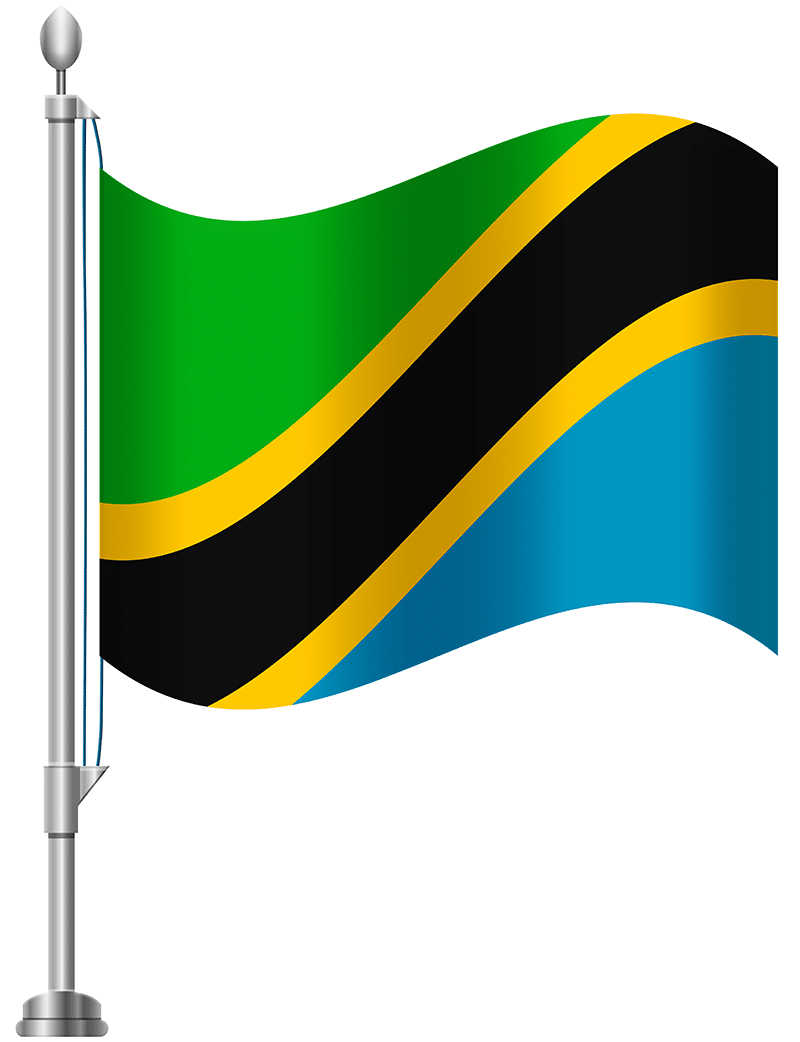
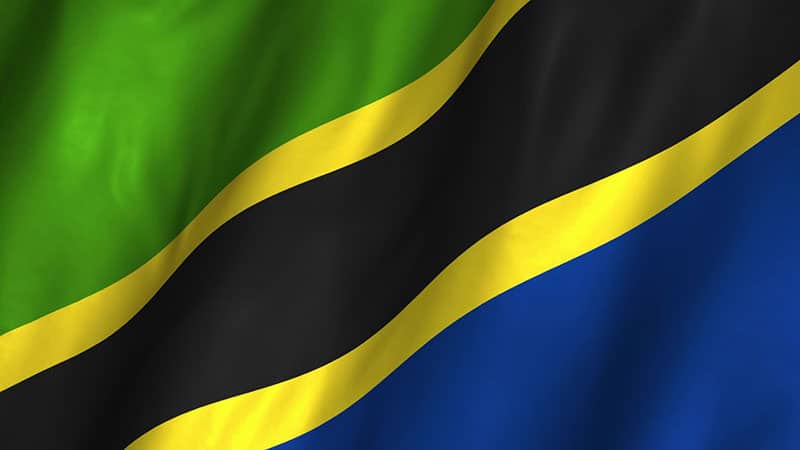
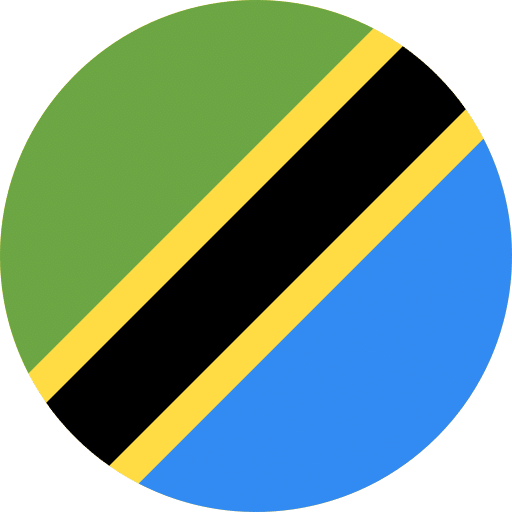
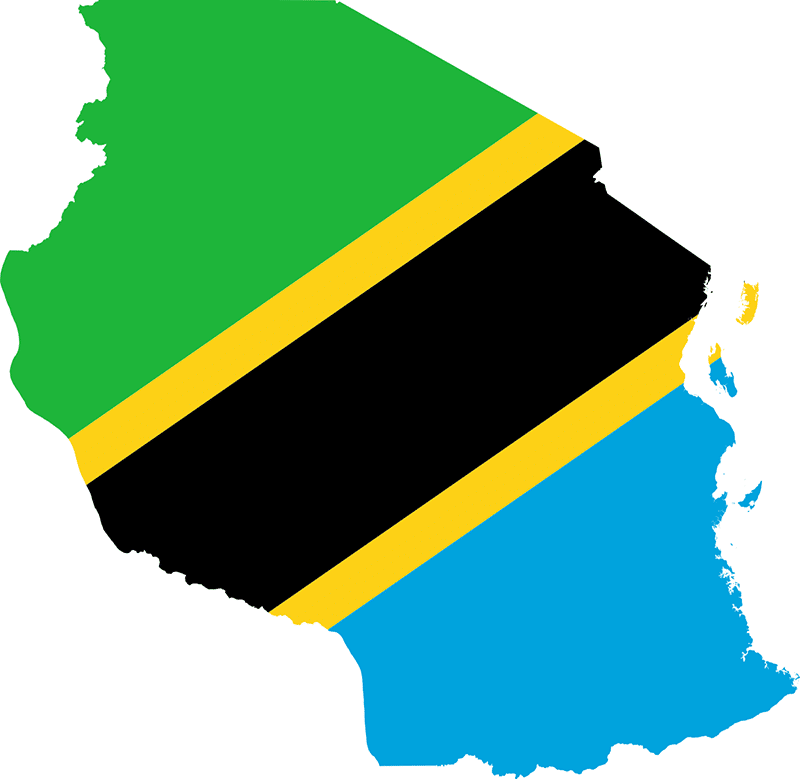
More Tanzania Flag Icon Resources:
- Transparent Tanzania flag
- Tanzania flag emoji
- Tanzania flag jpgtanzania flag jpg
- Tanzania flag logo
- Tanzania flag outline
- Tanzania flag png
- Tanzania flag svg
- Transparent Tanzania flag
Historical Flags That Led to the Current Tanzania Flag
| Flag | Duration | Use | Description |
|
|
1893-1919 | German East African flag (German Tanzania flag) | Horizontal black, white, and red fields also with the German Imperial Eagle [Reichsadler] at the centre in a white circle. |
|
|
1919–1961 | Tanganyika Territorial Flag (British Tanzania flag) | A British Red Flag with the Symbol of the British League of Nations mission [a British United Nations Trust Territory after 1946] at the centre of the flag’s outer half. |
|
|
1961–1964 | Flag of Tanganyika | A green background with a gold-bordered black horizontal stripe running through the centre. |
|
|
1896–1963 | Sultanate of Zanzibar flag [British protectorate]) | A simple red field. |
|
|
1963–1964 | The Sultanate of Zanzibar’s flag | A red background with a green circle containing two yellow cloves in the centre. |
|
|
January–April 1964 | Zanzibar’s People‘s Republic Flag | A horizontal tricolour of black, blue, and green. |
The Flag of Tanzania Resources
- printable tanzania flag
- tanzania flag animation
- tanzania flag bracelet
- tanzania flag printable
- tanzania flag wallpaper
- tanzania flag picture
- tanzania flag gif
FAQs
What do the colors of the Tanzanian flag mean?
The tanzania africa flag has three colors. The green represents Tanzania’s natural resources and vegetation, the yellow symbolizes the country’s mineral wealth, and the blue signifies its coastal areas and water resources.
What is the flag of Tanzania?
tanzania flag image [/caption]
What does the Tanzanian flag represent?
The Tanzania country flag represents the nation’s natural resources, economic potential, environmental stewardship, and its connection to water resources and the Indian Ocean.
What was the old Tanzania flag like?
The Tanzania old flag, used from 1964 to 2014, featured a green field with a diagonal black stripe from the bottom left corner to the top right corner, and a narrower yellow stripe above the black one, forming a triangular shape.
What’s the presidential flag of Tanzania like?
The presidential flag of Tanzania features a dark blue field with the national coat of arms in the center. The coat of arms consists of a warrior’s shield with a representation of Mount Kilimanjaro, two crossed spears, and a ribbon with the national motto in Swahili, which translates to “Freedom and Unity.” Above the coat of arms is a golden eagle with its wings spread, symbolizing sovereignty, while below the coat of arms is a banner displaying the name of the country, “Tanzania.
For more articles related to the Government of Tanzania and the Society (Community), click here!

























